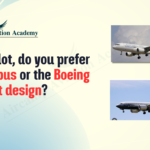1. Assess Your Eligibility
➢ Age – Most countries have minimum age requirements (usually 17-18 years old).
➢ Medical Fitness – You’ll need a medical certificate from an Aviation Medical Examiner (AME) to ensure you meet the physical and mental requirements for flying.
➢ Education – While not always mandatory, a high school diploma or equivalent is generally recommended.
2. Choose Your Pilot License
➢ Private Pilot License (PPL) – Allows you to fly for personal enjoyment and recreation.
➢ Commercial Pilot License (CPL) – Enables you to fly for hire or compensation.
➢ Instrument Rating (IR) – Allows you to fly in instrument meteorological conditions (IMC).
➢ Multi-Engine Pilot License (MEPL) – Authorizes you to fly aircraft with more than one engine.
3. Select a Flight School
➢ Research and Compare – Look for FAA-approved flight schools with experienced instructors and a good safety record.
4. Obtain Your Medical Certificate
➢ Schedule an appointment – Contact an Aviation Medical Examiner (AME) for a medical examination.
➢ Prepare for the exam – Ensure you are in good health and disclose any relevant medical conditions.
5. Ground School Training
➢ Learn the Fundamentals – Study aviation theory, including aerodynamics, meteorology, navigation, and regulations.
➢ Prepare for Written Exams – Take practice exams and review your study materials thoroughly.
6. Flight Training
➢ Log Flight Hours – Accumulate the required flight hours for your chosen license (e.g., 40 hours for PPL, 250 hours for CPL).
➢ Develop Flight Skills – Learn basic maneuvers, navigation, and emergency procedures.
➢ Practice and Refine – Consistent practice is key to developing strong piloting skills.
7. Written and Practical Examinations
➢ Written Exams – Pass the FAA written exams covering aviation theory.
➢ Practical Flight Test – Demonstrate your flying skills to an FAA examiner in a checkride.
8. Obtain Your Pilot License
Upon successful completion – You will receive your pilot license and logbook.
9. Continuing Education
➢ Maintain Proficiency – Regularly practice flying to maintain your skills.
➢ Advance Your Training – Consider obtaining additional ratings, such as an instrument rating or type rating for specific aircraft.
➢ Stay Updated – Keep up-to-date with aviation regulations and safety procedures.
10. Explore Career Options
➢ Commercial Pilot – Work for airlines, charter companies, or flight schools.
➢ Flight Instructor – Teach aspiring pilots at a flight school.
➢ Corporate Pilot – Fly for businesses or private individuals.
➢ Become an Airline Pilot – Gain experience and meet airline requirements for employment.
Remember-
➢Safety First – Always prioritize safety in all aspects of flight training.
➢Stay Patient and Persistent – Becoming a pilot takes time, dedication, and perseverance.
➢Enjoy the Journey – Embrace the learning process and enjoy the thrill of flying.






